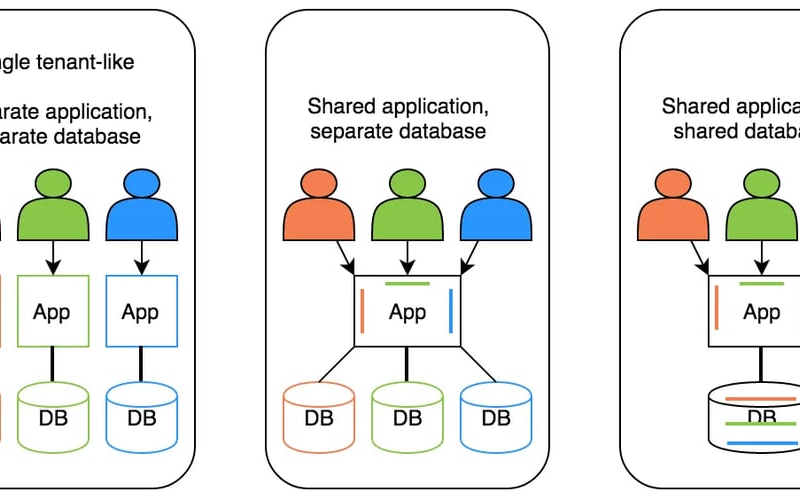Understanding Multi-Tenant vs. Single-Tenant Applications
Introduction
In the world of software architecture, particularly for SaaS (Software as a Service) applications, two primary models are widely used: multi-tenant and single-tenant architectures. Each model has its advantages and challenges, and the choice between them depends on various factors such as scalability, cost, security, and customization needs.
What is a Multi-Tenant Application?
A multi-tenant application is designed to serve multiple customers (tenants) using a single instance of the software. In this architecture, resources such as databases, servers, and applications are shared among all tenants. Each tenant’s data is isolated and invisible to others, but they share the same underlying infrastructure.
Advantages of Multi-Tenant Architecture
- Cost Efficiency: Since resources are shared, the cost per user is lower. Maintenance and operational costs are distributed across multiple tenants【24†source】【25†source】.
- Scalability: Multi-tenant systems can scale efficiently by optimizing resource usage across tenants. Adding new tenants is straightforward and doesn’t require new infrastructure for each one【25†source】【26†source】.
- Simplified Maintenance: Updates and maintenance are easier to manage as changes are applied to a single instance affecting all tenants simultaneously【24†source】【26†source】.
Disadvantages of Multi-Tenant Architecture
- Security Risks: Shared resources can lead to increased security risks. A breach affecting one tenant could potentially compromise others【25†source】.
- Performance Issues: The “noisy neighbor” problem, where the performance demands of one tenant impact others, can be a concern【25†source】.
- Limited Customization: Customization options are usually limited compared to single-tenant systems as changes impact all tenants【26†source】.
What is a Single-Tenant Application?
In a single-tenant architecture, each tenant has their own instance of the software, including separate databases and servers. This isolation provides a higher degree of customization and security, tailored to the specific needs of each tenant.
Advantages of Single-Tenant Architecture
- Enhanced Security: Each tenant’s data is completely isolated, reducing the risk of data breaches and ensuring privacy【24†source】【25†source】.
- Customization: Tenants can customize their instance extensively, adapting the software to their unique requirements【26†source】.
- Performance: With dedicated resources, single-tenant applications can offer better performance without the risk of interference from other tenants【25†source】.
Disadvantages of Single-Tenant Architecture
- Higher Costs: Maintaining separate instances for each tenant is resource-intensive and more expensive. The costs of infrastructure and maintenance are higher compared to multi-tenant systems【24†source】【25†source】.
- Complex Scalability: Scaling single-tenant applications is more challenging as it requires provisioning new instances for each tenant, which can be time-consuming and costly【26†source】.
- Maintenance Overhead: Each instance requires individual updates and maintenance, leading to increased operational overhead【25†source】.
Key Differences
Here are some key differences between multi-tenant and single-tenant architectures:
| Feature | Multi-Tenant App | Single-Tenant App |
|---|---|---|
| Isolation | Shared resources, data isolation | Separate infrastructure for each tenant |
| Security | Increased risk due to shared resources | Higher security due to isolation |
| Scalability | Efficient and quick | Complex and resource-intensive |
| Customization | Limited | Extensive |
| Cost | Lower per user | Higher |
| Maintenance | Easier, centralized | Complex, individualized |
| Performance | Potential noisy neighbor issues | Optimized for each tenant |
Conclusion
Choosing between a multi-tenant and single-tenant architecture depends on your specific needs and goals. Multi-tenant architectures are ideal for cost-efficiency, scalability, and ease of maintenance, making them suitable for SaaS providers with many users. Single-tenant architectures offer enhanced security, customization, and performance, making them better suited for organizations with specific, high-security requirements.
Visual Representation
Multi-Tenant Architecture
Single-Tenant Architecture
References
These sources provide comprehensive insights into the benefits, drawbacks, and use cases of multi-tenant and single-tenant architectures, helping you make an informed decision based on your application requirements.
Source link
lol


